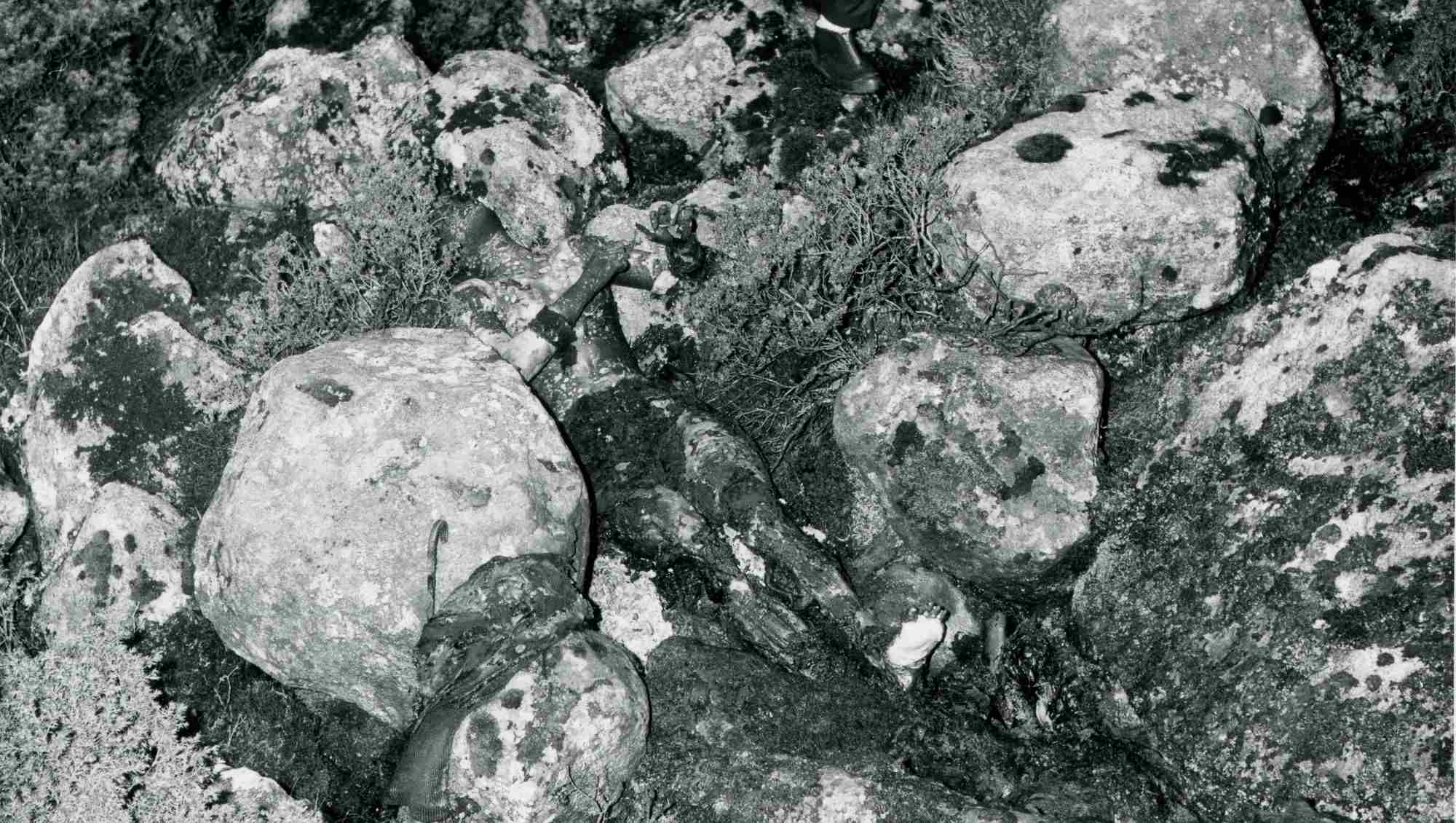The valley of Isdalen, which is near the Norwegian town of Bergen, is often known as the “death valley” among locals not only because many campers occasionally perish in the mountains in the region, but also because in the Middle Ages the treacherous slopes were a popular place for suicides. However, on November 29, 1970, the moniker became even more relevant when a family strolling through the area made a terrifying discovery.

The first policemen to arrive at the scene noticed that there was an unmistakable smell of burning meat in the valley. Upon analyzing the site more carefully, they realized that the source of the smell was the body of a woman who was trapped between several large rocks. The body was so badly charred that it was completely unrecognizable, although its back remained mysteriously intact.
An autopsy would later reveal that the woman could have been alive when her body began to burn, despite more than 50 sleeping pills found in her stomach. In addition, there were also several other strange elements at the crime scene. For example, although the woman’s clothes were also heavily burned, investigators noted that the tags had been strategically cut.

Her belongings, including jewelry and a watch, had been removed and placed specifically around the victim’s body, which to one of the first investigators to arrive at the scene appeared to be part of “some sort of ceremony.” However, this would only be the beginning of what would become the greatest mystery in Norwegian history.
The conduct of investigations

Even with all the publicity about the case, local police were unable to move forward in identifying the woman who had become known only as “the Woman of Isdalen”, because of the valley in which she was found. There was even some advance in the case when her fingerprints matched luggage found at the Bergen train station, but instead of clarifying the woman’s name and origins, the contents of the suitcase simply further confused the police.

Clothes, a diary and a postcard were found , but nothing was very relevant. In practice, anything that could identify the woman appeared to have been purposefully removed. The postcard led the police to the Italian photographer who had given it away. At the time, the photographer told investigators that he had had dinner with the woman once, but made it clear that he did not know her before that. With the exception of this report, he was unable to provide the police with any useful information.
When officers examined the diary, they found some coded parts. Around this time, there were already reports that the woman had been seen taking notes during a military test of new rockets in western Norway, which could indicate some espionage, but that aspect of the investigation went nowhere. In addition to the mundane items that any traveler would carry, the “Woman of Isdalen” luggage also contained some wigs and coins from various countries.
It was only after much investigation that the police finally managed to trace the origins of some of the items in the luggage and proceeded to interrogate shopkeepers and other witnesses who had interacted with the Woman of Isdalen.
The witness report and the police version

Witnesses interviewed by police said they even saw an elegant, well-dressed woman who spoke English very well, but with some sort of accent. She had checked into a hotel but was probably using a false name.
From this account, investigators were able to determine that the unnamed woman had traveled throughout Norway and Europe. She started using different aliases and fake passports to check into hotels. Also, the codes in the diary were likely related to the places the woman had visited. Unfortunately, this is where the investigation ended.
With no further clues, the police ended up declaring Isdalen’s Woman a suicide (because of the sleeping pills found during the autopsy), although there was no clear explanation for the deliberate burning of the body and the remote location where she had been found. The woman received a Catholic funeral in 1971 and the case was dismissed despite many unanswered questions.
A new investigation a possible solution to the case

Decades later, the mysterious death of the Woman of Isdalen is under investigation again, thanks to major advances made in the field of forensic science since the 1970s, including DNA testing and isotopic analysis.
The burned woman’s chin was not buried along with the rest of her body in 1971. In fact, it was left in police files for possible future analysis. From it and the victim’s belongings, investigators equipped with modern devices were able to sketch a timeline that indicated the woman had moved from Central or Eastern Europe (possibly France or Germany) before or during World War II.
Her origins, combined with the fact that witness accounts say she spoke several languages, led to the popular theory that the Woman of Isdalen was a spy. In fact, Norway was the scene of a lot of espionage during the Cold War, as it was right on the front lines between Russia and the West. However, the Woman of Isdalen ended up dying mysteriously, probably because whoever killed her took great care to ensure that she was never identified.
While this may mean that her full story may never be known, researchers hope they can at least find her relatives, so she can finally rest in peace in a more dignified way.



